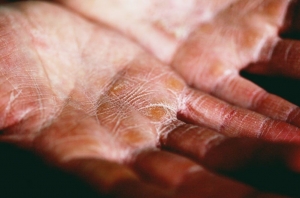In the bustling city of Singapore, where sunshine is abundant, the allure of sun-kissed skin often masks a more insidious enemy – sun damage. Overexposure to the sun can lead to various skin issues, including fine lines, wrinkles, hyperpigmentation, and uneven skin texture. These changes, while common, can be distressing to those striving for a youthful and healthy appearance.
Understanding the role of treatments in an aesthetic clinic in addressing these issues is crucial for anyone seeking solutions for their skin problems. But before we get to the treatments, you need to understand the effects of sun damage on your skin.
What is Sun Damage?
Sun damage is primarily caused by prolonged exposure to ultraviolet (UV) rays, which penetrate the skin and cause harm at multiple levels. The effects of sun damage are cumulative, meaning they build up over time, potentially leading to more significant issues as you age. This damage manifests in various forms, impacting your skin's health and appearance differently. Protecting your skin and seeking appropriate interventions are paramount to maintaining skin vitality.
Common Effects of Sun Damage
Overexposure to the sun can lead to a range of skin issues that affect people differently based on factors such as age, gender, and skin type.
Fine lines and wrinkles
Fine lines and wrinkles are among the earliest signs of sun damage. UV rays break down collagen and elastin, two proteins vital for skin elasticity. This degradation results in the skin losing its firmness, forming fine lines and deeper wrinkles over time. Such changes are often more apparent in individuals who are middle-aged or older. However, younger people are not immune, especially when exposed to high amounts of sun.

Hyperpigmentation
Hyperpigmentation is another prevalent effect, characterised by darkened patches or spots on the skin. This occurs when UV rays trigger the production of melanin, the pigment responsible for skin colour, resulting in an uneven skin tone. Hyperpigmentation is commonly seen in individuals who have spent significant time in the sun without adequate protection, and it is prevalent across all ages and genders.
Uneven skin texture
Uneven skin texture is also a result of sun damage, where the skin feels rough or bumpy. This condition arises from the thickening of the outer layer of the skin due to excessive sun exposure, leading to a coarser surface. Those with fair skin are more susceptible to this effect. Still, it can affect anyone who frequently exposes their skin to the sun without protection.
The Importance of Addressing Sun Damage
Addressing sun damage is not merely about cosmetic enhancement but preserving skin health and boosting confidence. Skin that appears aged or blemished can significantly impact self-esteem and mental well-being. For many, improving skin appearance can increase confidence in social and professional settings, contributing to overall mental health.
Furthermore, treating sun damage can prevent further deterioration of the skin. Left unaddressed, sun damage can exacerbate, potentially leading to more serious skin conditions, including pre-cancerous changes. Thus, timely and effective treatment is essential for long-term skin health.
Aesthetic Treatments for Sun Damage
The world of aesthetic treatments offers various options tailored to combat sun damage, each with unique benefits and considerations.
Chemical Peels
Chemical peels involve the application of a chemical solution to the skin, which causes the top layers to peel away, revealing healthier skin beneath. This procedure can help reduce fine lines, wrinkles, and pigmentation. The effects of chemical peels lie in their ability to stimulate new skin growth while removing damaged layers.
However, like any procedure, chemical peels have potential side effects, including redness, irritation, and, in some cases, scarring. It's crucial to consult a professional to determine the type and depth of peel suitable for your skin type.
Laser Resurfacing
Laser resurfacing uses concentrated beams of light to target and remove damaged skin cells. Different types of lasers are available, including ablative and non-ablative lasers, each serving different purposes.
Ablative lasers remove layers of skin and are more intensive and beneficial for deeper wrinkles and more significant sun damage. On the other hand, non-ablative lasers work by stimulating collagen production, are less invasive and are suitable for minor sun damage and maintenance.
While laser resurfacing can yield significant improvements, preparing for recovery is important, as the skin requires time to heal post-treatment.
Photofacials
Photofacials, also known as intense pulsed light (IPL) therapy, utilise light energy to target pigmentation issues and improve skin texture. This treatment can effectively address sunspots and mild sun damage, offering a relatively quick solution with minimal downtime.
Candidates for photofacials typically have fair to medium skin tones and mild sun damage. Like other treatments, seeking a professional consultation is essential to ensure this method aligns with your skin's needs.
The Role of Consistent Sun Protection
While aesthetic treatments are effective, they are not standalone solutions. Consistent sun protection is crucial to prevent further damage and maintain the benefits achieved through treatments. Daily application of a broad-spectrum sunscreen with an SPF of at least 30 is imperative, regardless of the weather. Beyond sunscreen, consider additional protective measures such as:
- Wear protective clothing, such as long-sleeved shirts, pants, and long skirts, to shield your skin from harmful UV rays while keeping you cool and comfortable.
- Seek shade, especially during the peak sun hours between 10 a.m. and 4 p.m. This is when the sun's rays are the strongest, so staying under a tree, umbrella, or shaded area can significantly reduce direct sun exposure and prevent sunburn.
- Use wide-brimmed hats to cover your face, ears, and neck. Hats with a brim of at least 3 inches are ideal, as they provide ample protection and can be a stylish accessory to complement your outfit.
- Wear sunglasses that block UV rays to protect your eyes and the delicate skin around them. Look for sunglasses with 100% UV protection to protect your eyes from potential damage caused by prolonged sun exposure.
Conclusion
Aesthetic treatments offer valuable solutions for addressing sun damage and restoring skin vitality. However, they are most effective with consistent sun protection and professional guidance. Understanding the available treatments and prioritising skin care can significantly enhance your skin's health and appearance.
If you are considering aesthetic treatments, it is advisable to consult with a qualified specialist who can provide personalised advice tailored to your skin's unique needs. Remember, the goal is to look and feel better, empowering you to face the world confidently.






